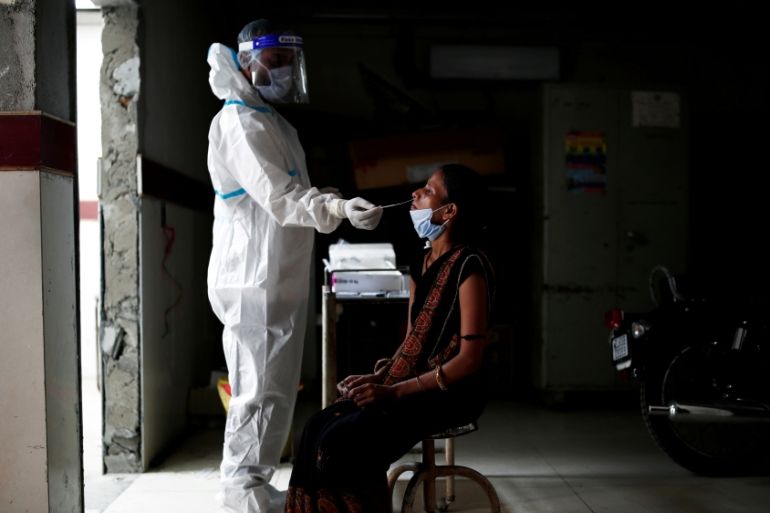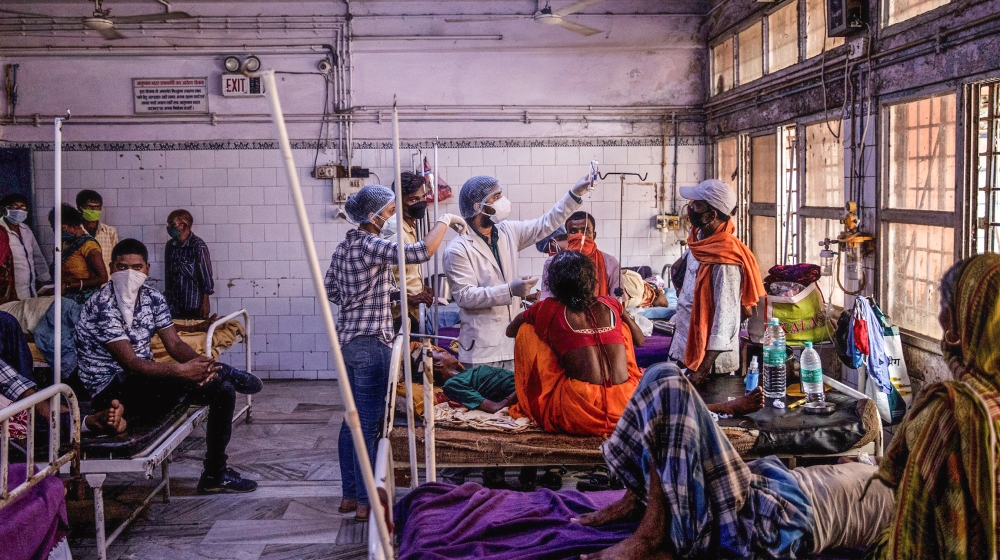Indian hospitals face oxygen shortage as COVID-19 cases surge
In Maharashtra, Gujarat and Uttar Pradesh states badly affected by the virus, demand for oxygen has more than tripled.

India’s coronavirus infections surged past five million on Wednesday, piling pressure on hospitals grappling with unreliable supplies of oxygen that they need to treat tens of thousands of critical patients.
In the big states of Maharashtra, Gujarat and Uttar Pradesh, that are also some of the worst-affected by the virus, oxygen demand has more than tripled, doctors and government officials said, prompting urgent calls for help.
Keep reading
list of 4 itemsMexico’s teachers seek relief from pandemic-era spike in school robberies
‘A bad chapter’: Tracing the origins of Ecuador’s rise in gang violence
Why is the US economy so resilient?
“Desperate patients have been calling me through the night but I don’t know when I will get stock,” Rishikhesh Patil, an oxygen supplier in the western city of Nashik, told Reuters news agency.
The health ministry reported 90,123 new infections on Wednesday, taking the total caseload to 5.02 million.
The death toll from COVID-19 is now at 82,066, the ministry said, with 1,290 fatalities recorded in the previous 24 hours.
|
|
India has the world’s fastest-growing novel coronavirus epidemic and added its last million infections in just 11 days. It is only the second country in the world to have more than five million cases, after the United States.
At least 6 percent of India’s nearly one million active cases need oxygen support, health ministry official Rajesh Bhushan told reporters. Supplies were adequate but state governments should monitor usage and flag shortages, he said.
“The problem happens when at a facility level, if there is no inventory management. Every state should ensure this,” Bhushan said.
Demand for oxygen cylinders surge
In the capital of India’s most populous state of Uttar Pradesh, the total requirement of oxygen cylinders stood at 5,000 cylinders compared with 1,000 cylinders in normal times, a government official said.
The worst-affected state of Maharashtra has decided to reduce supply to neighbouring states to meet its growing demand, a state government official said.
Vehicles carrying oxygen will get right of way and can use sirens to ensure they reach hospitals faster.
Ravindra Khade Patil, a doctor who manages two private hospitals on the outskirts of Mumbai, spoke of the stress he faces trying to ensure he can supply his patients with oxygen.
Two days ago, the supplier of oxygen to his hospitals did not turn up at his usual time.
Patil made frantic calls to the supplier and then to nearby hospitals and politicians, knowing that if the oxygen did not arrive on time, it would be too late for some of his most critical patients.
Finally, past midnight, thanks to pressure from a government official, the oxygen tanks arrived.
“If they had arrived even a couple of hours late, we could have lost five or six patients. Every day, we are worried if we will be able to meet our requirements, if the oxygen will arrive or not,” Patil told Reuters.
